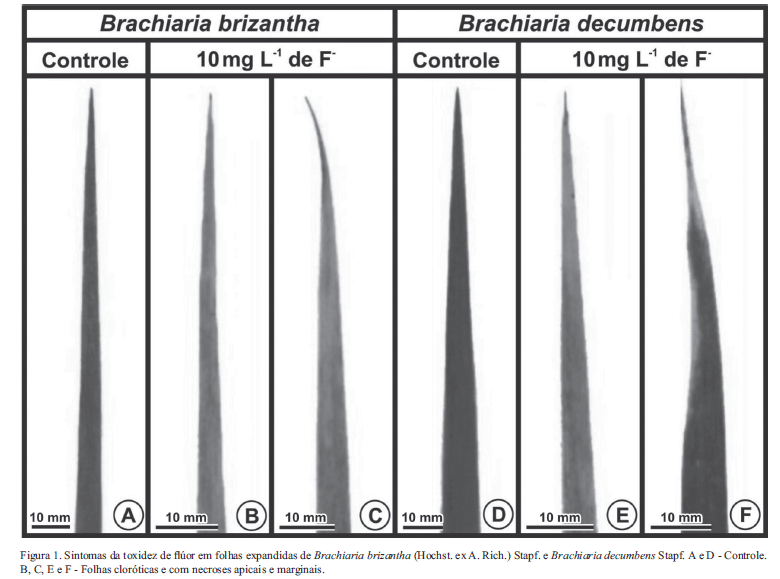To assess the effects of fluoride on signal grass, plants of Brachiaria brizantha and B. decumbens were submitted to simulated fluoride fog (10 µg ml-1). Leaf fragments from apparently healthy portions were colleted 24 hours after the last exposure and used for microscopic analysis. Roots, leaves and rhizomes were submitted to fluoride content quantification. The leaves presented small, sparse necroses. The accumulation of fluoride was observed on the leaves only. B. brizantha and B. decumbens presented, respectively, 4.4 and 5.2 times more fluoride than the control treatment. No difference was observed concerning the accumulation potential of both species. The main micromorphological alterations observed were injuries near the trichomes, therefore, suggesting that these are the preferential routes by which pollutants enter the plants. Visually healthy leaf portions of the two species showed microscopic damages before symptoms appeared, presenting turgidity loss in the bulliform cells of B. brizantha and in all tissues of B. decumbens. Micromorphometric alterations were observed only in B. decumbens, indicating higher sensibility to fluoride in comparison to B. brizantha. Further studies of long duration will be essential to determine the bioaccumulation potential of B. brizantha.
plant anatomy; signalgrass; necrosis











